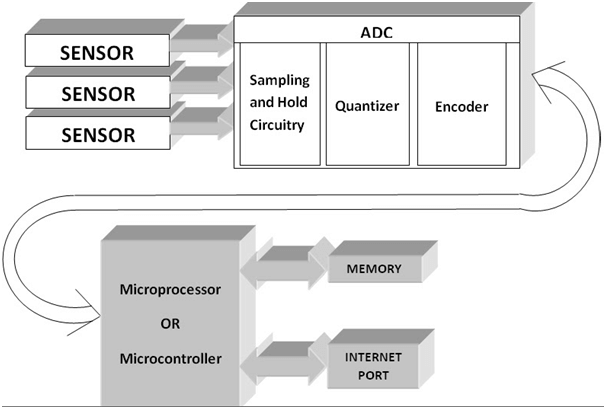The Data Acquisition Systems are often called as-as DAS or DAQ systems that help to track or measure some physical system and convert data into a format that can be easily manipulated by computers. The first DAS in the world was designed by IBM in year 1960s, and they were a large assemblage of hardware and computers. With huge advancements in the technologies, now the market is loaded with more generic systems that can analyze almost all types of physical systems with ease.
DAS are presently being used in several fields ranging from scientific experiments to industrial productions. Experts have designed different types of data acquisition system to work on each one of these applications. Note that, DAS can be divided into three major components that are discussed below. If you are planning to design Data Acquisition Systems, you need to work on these three components. A simple data acquisition system block diagram is presented below with the essential components and their internal elements.

Sensors: Used to collect data from the physical world. You can find a wide range of sensors in the market, and they can help you to measure almost all physical properties that you want to use for the targeted project. Depending upon the application, you need to use right data and make sure that collected information is useful for your needs. Some of the most commonly used sensors are designed to measure force, fluid flow, gas pressure, light intensity, and temperature. Sensors here act like transducers, and they automatically help to convert measured physical energy into the desired electrical signal.
Signal Processing System: The signal processing system is used to transfer data from sensor to computer. Generally, this data contains messy information that is corrupted by noise so, in order to process it further, first, it is important to manipulate it to get the desired data. Also, most of these sensors produce a signal with very loss intensity that cannot be processed directly in the computer systems. So, amplifiers are used at an intermediate stage.
Computer: System on which the collected data can be analyzed and viewed. It gets clean and amplified data as input and process that data to make further analysis. The signal is first converted into digital format and then processed through software tools to get desired results.
The capabilities of DAQ systems are increasing day by day, and they are widely used for numbers of applications around the world. They have a huge set of robust features that are dominating the market with huge potential.